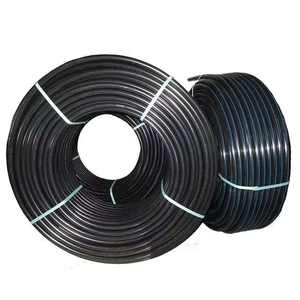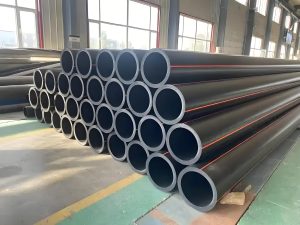LUOYANG DATANG ENERGY TECH CO.,LTD

What Pipe Is Used For Water Supply
The Unsung Heroes: Pipes That Bring Water to Your Tap
(What Pipe Is Used For Water Supply)
Think about it. You turn a handle. Clean water flows. It seems simple. But behind that simple act lies a complex network. The real stars? The pipes hidden in walls and underground. Choosing the right pipe for water supply isn’t just about plumbing. It’s about safety, reliability, and making sure water gets where it needs to go, every single time. Let’s explore the world of water supply pipes.
What Are Water Supply Pipes?
Water supply pipes are the dedicated pathways. They carry fresh, pressurized water. This water comes from its source. It travels to your home, office, or factory. Think of them as the vital arteries of any building or city’s water system. They are distinct from pipes carrying waste water away. Their job is one-way delivery: clean water in.
These pipes face constant pressure. They must be strong. They must be durable for decades. They need to resist corrosion. Corrosion can contaminate the water. They also need to handle temperature changes. Freezing winters or hot summers shouldn’t crack them. Materials matter immensely here. Common choices include copper, known for its reliability. PEX (cross-linked polyethylene) offers flexibility. PVC (polyvinyl chloride) and CPVC (chlorinated polyvinyl chloride) are popular for cost and ease. Each material has strengths. Each has ideal uses.
Why Pipe Material Choice Matters for Water Supply
Picking the right pipe isn’t a guessing game. It’s critical. The wrong choice leads to big problems. Leaks are a nightmare. They waste water. They cause property damage. They invite mold. Worse, some materials can leach chemicals into the water. This affects taste. It affects safety. Nobody wants harmful substances in their drinking water.
Water quality is paramount. Pipes must not react with the water. They must keep the water clean and safe to drink. Longevity is another key factor. Replacing pipes buried under concrete or inside walls is expensive and disruptive. You want pipes that last. Cost is always a consideration. But it’s not just the upfront price. Think about installation costs. Think about long-term maintenance. A cheaper pipe needing frequent repairs costs more in the end. Local building codes also dictate choices. They set safety and performance standards. Ignoring codes isn’t an option.
How Different Water Supply Pipes Work and Are Installed
Each pipe material works a bit differently. Installation methods vary too.
Copper: This classic material is tough. It resists corrosion well. It handles high heat. Plumbers often solder copper pipes together. This creates very strong, leak-resistant joints. Copper is rigid. Bending it requires special tools. It’s common for indoor water lines, both hot and cold.
PEX: This flexible plastic tubing is a game changer. It bends easily around corners. This reduces the need for fittings. Fewer fittings mean fewer potential leak points. Installers use special crimp rings or clamp rings over barbed fittings. PEX connects quickly. It’s great for retrofits and tight spaces. It resists freezing bursts better than rigid pipes. PEX is used for hot and cold lines inside homes.
PVC & CPVC: These rigid plastic pipes are lightweight and affordable. PVC is generally for cold water only. CPVC handles both hot and cold. Installers cut them easily with a saw. They glue the joints using special solvent cement. This creates a welded bond. These pipes are common for main supply lines underground and inside walls for cold water (PVC) or hot/cold (CPVC). They aren’t flexible like PEX.
Choosing the right method depends on the pipe, the location, and the plumber’s expertise. Proper installation ensures a leak-free system for years.
Applications: Where Different Water Supply Pipes Shine
Not all pipes work best everywhere. The application dictates the best choice.
Main Municipal Lines (Underground): Large-diameter pipes bring water from treatment plants to neighborhoods. Ductile iron pipe is often used here. It’s incredibly strong for heavy loads underground. Concrete Pressure Pipe is another option for large mains. PVC is also frequently used for these underground mains because it’s corrosion-resistant and cost-effective.
Service Lines (To Your House): This pipe runs from the city main under your yard to your home. Copper has been traditional. PEX is becoming very popular due to its freeze resistance and flexibility. Corrugated stainless steel tubing is another option, especially where rodents are a concern.
Inside Your Home (Potable Water): This is where you see the most variety.
Copper: Still widely used, especially for exposed runs like in basements or where high heat is a factor (near water heaters).
PEX: The dominant choice for new construction and renovations. Its flexibility makes running lines through walls and floors much faster. Red (hot) and blue (cold) color-coding is standard.
CPVC: A budget-friendly option for both hot and cold water lines inside walls. Easier to work with than copper for DIYers.
Hot Water Supply: Copper, CPVC, and PEX (specifically rated for hot water) all handle hot water delivery effectively. The choice often comes down to cost, local code, and installer preference.
Well Water Systems: PEX is extremely popular for well systems because it handles the pressure and resists mineral buildup better than some metals. PVC is also common for the drop pipe inside the well itself.
Water Supply Pipe FAQs
Q: What is the best pipe for home water supply?
A: There’s no single “best” pipe. PEX is often the top choice for new homes and renovations. It’s flexible, freeze-resistant, easy to install, and affordable. Copper is reliable and long-lasting but costs more and is harder to install. CPVC is a solid budget option. The best depends on your budget, local codes, and specific needs.
Q: Is PVC pipe safe for drinking water?
A: Yes, but only specific types. Look for pipes marked “NSF/ANSI 61” or “NSF-PW.” This means they meet standards for potable (drinkable) water. Standard white PVC schedule 40 is generally for cold water only. Never use non-potable rated PVC (like DWV – Drain Waste Vent) for drinking water.
Q: Can PEX pipes freeze without bursting?
A: PEX is more freeze-resistant than copper or PVC. It can expand slightly if water inside freezes. This often prevents the pipe from splitting. Copper and rigid plastic pipes are more likely to burst if frozen. But it’s still crucial to insulate pipes in cold areas. No pipe is truly freeze-proof.
Q: How long do water supply pipes last?
A: Lifespan varies greatly by material and conditions. Copper pipes can last 50+ years. PEX and quality CPVC are expected to last 40-50 years. Poor water quality (very acidic or basic) or improper installation can shorten this. Regular checks help spot small leaks early.
Q: What size pipe do I need for my house?
(What Pipe Is Used For Water Supply)
A: Size depends on water demand. The main line from the street is usually 3/4 inch or 1 inch diameter. Inside the house, branch lines to fixtures are often 1/2 inch. Toilets and showers might use 1/2 inch. Sinks often use 3/8 inch supply lines. Local plumbing codes specify minimum sizes. A professional plumber calculates the right size for good water pressure everywhere.





